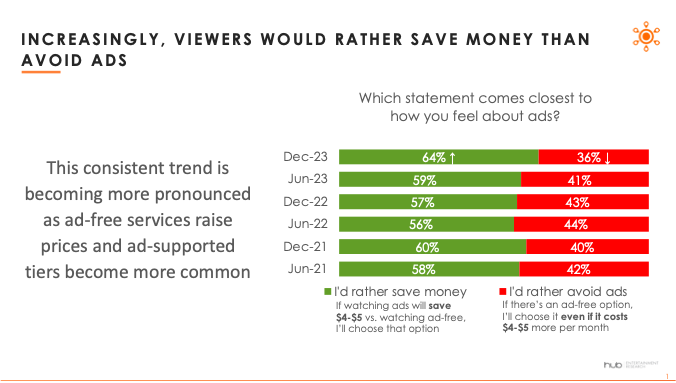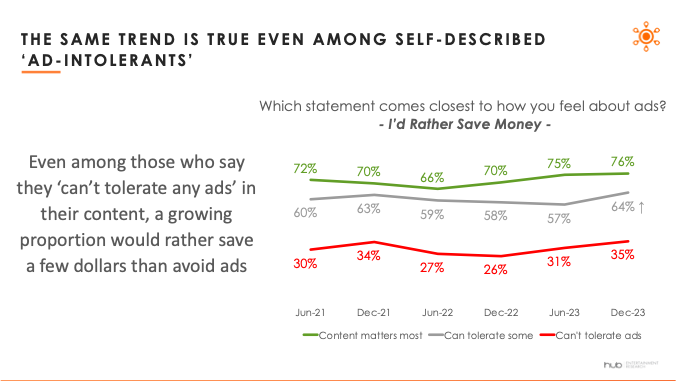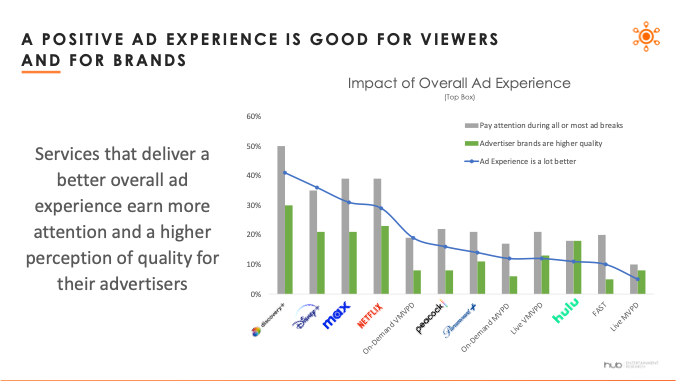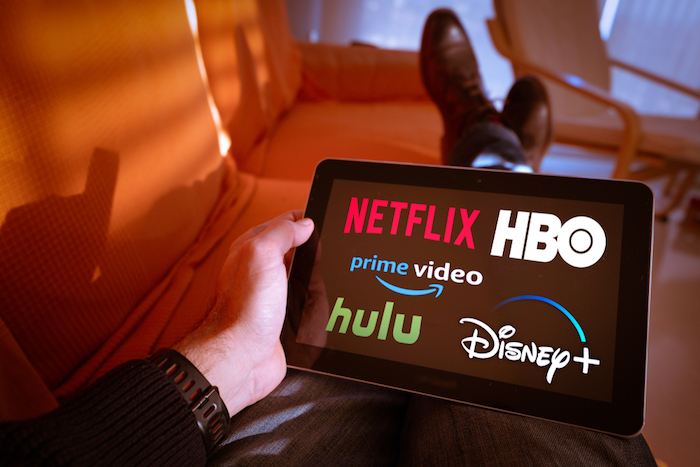According to the "TV reklama: Fact vs. Fiction" study , this percentage is "significantly higher".
 Source: Hub Entertainment Research
Source: Hub Entertainment ResearchThis softening of ad aversion is a trend that will continue to grow, as the Hub reports that over the past year, more and more consumers who identify as ad-intolerant say they would actually choose an ad-supported service to save money.
 Source: Hub Entertainment Research
Source: Hub Entertainment ResearchBut consumers' tolerance for advertising is not unlimited: the Hub reported that nearly four in ten viewers would prefer a streaming service over another if it were less ad-heavy. In addition, nearly 50% of those surveyed said they pay more attention when ad breaks are shorter, and that those advertisers in services with shorter ad breaks are viewed as “higher quality,” Hub said.
 Source: Hub Entertainment Research
Source: Hub Entertainment ResearchWhat is considered to be a “reasonable” ad break? Hub's survey showed that most viewers consider ad breaks reasonable if they are one minute or shorter. Ninety seconds is the tipping point where most viewers no longer consider a break reasonable.
Although ad-supported streaming services have been available since the launch of Hulu in 2008, it was Netflix’s introduction of an ad-supported version of its service in 2022 that started a trend that saw its competitors, including Disney+ and Max, among others, to launch their own ad-supported versions in 2023.
Hub said that although there is widespread acceptance of advertising in streaming video, there is still opportunity to sign up new subscribers. Most consumers are not aware these services have introduced lower cost ad-supported tiers. Aggressive marketing of the less expensive options can attract viewers who have not yet subscribed to a service because of perceived high cost, Hub said.
Hub added that streaming video currently provides a better environment for their messages than traditional linear TV because the lower ad loads on most services are generally within the boundaries of what viewers consider reasonable. As a result, they are paying more attention to the ads, and thinking more positively about the brands, Hub said.
“As consumers begin to get hit with the double whammy of needing multiple subscriptions to get their entertainment, coupled with significant price increases, opting in for advertising becomes more appealing to them,” said Mark Loughney, senior consultant to Hub. “And as long as providers stick to reasonable ad loads, it’s a win for them and their advertisers as well.”
Source: tvtechnology.com

